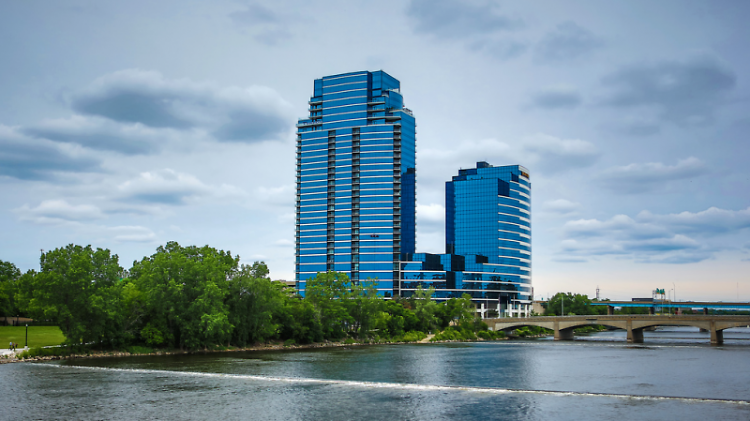It's hard to deny that Grand Rapids has changed quite a lot in just a short period of time, and, in stark contrast to much of the state, for the better. Despite more than a decade of recession and the collapse of the auto industry, downtown Grand Rapids looks great. There's very little blight, many of the older buildings have been renovated or repurposed, and a whole new health sector has emerged on Michigan Street. With the new DeVos Place Convention Center, the Van Andel Arena, museums, university campuses and Downtown Market, it doesn't look anything like the staid, almost derelict downtown of just 20 years ago. Nationally, people are starting to notice that it's a great place to live and raise a family.
In terms of culture and entertainment, the city has been revitalized into Beer City, USA and has a growing food enthusiast crowd. Zombie dashes, group pillow fights and swing dancing, city-wide sidewalk chalking and of course ArtPrize - did any of us dream of seeing these sorts of events in our city? I certainly didn't. We were just a sleepy little burgh in the eighties, still punching in and punching out Monday to Friday, eating our abundance of plain food and following high school football.
It has occurred to me to wonder, though, why has Grand Rapids changed? It's easy to accept change as a default "position" because so much has changed in a few generations. Technology, education, employment, entertainment, values and beliefs and social and familial arrangements - it's all different now. But compared to other mid-sized cities in Michigan - and certainly compared to Detroit - Grand Rapids is far better off today. Why?
What I mean is, cities don't just spring up overnight. At least, not attractive, functional and safe ones. The ones that do have a reason: a sudden discovery or financial opportunity - like a deep oil reserve or a car factory. There have been no surprise natural resources cropping up in West Michigan, and the Medical Mile - that was planned. It all seems to have been planned some time ago, actually, by people who were paying some attention.
Why do we now have bike lanes everywhere? And new housing and office space downtown? Why did we just pass a parks millage and before that a school and a bus millage? Why is Grand Rapids making a push for public transportation?
Michigan Future put out a report in 2008 on the results of a study they did on "Attracting The Millenial Knowledge Worker." It makes for interesting reading in light of the changes we've seen locally. Michigan Future's purpose was to try and circumvent the brain drain from the Metro Detroit area so that Detroit might stabilize and return to prosperity. I think it can be argued that, despite some truly fantastic things going on at a local level in downtown Detroit, the city did not follow this vision and it has continued to weaken and come apart. Unlike Detroit, the City of Grand Rapids has been concentrating on areas identified by Michigan Future as necessary to attract a young, creative class, and it has borne fruit.
These areas include:
- public transportation and urban walkability (this would include bike friendliness or other green city exploring options such as scooters)
- retail and dining density at the city's core
- local government efficiency and sustainability
- green space maximization
The city has focused very heavily on the above and promoting the above to attract more prosperity to it in terms of a young, creative class who, in a global, knowledge economy, could work anywhere and, according to research, demand the kind of living environment Grand Rapids is rather quickly becoming. I think this is reflected in the energy and vibrancy the city has, of late, taken on and is now generating on its own. While Grand Rapids belongs to all of us - young, old and middle aged - and different aged people value different things in the city (I've heard older people comment on how unsafe it is here now), the future belongs to the young. Without them, there is no City of Grand Rapids in 2025 or 2050. This is an investment worth making.
The Rapidian, a program of the 501(c)3 nonprofit Community Media Center, relies on the community’s support to help cover the cost of training reporters and publishing content.
We need your help.
If each of our readers and content creators who values this community platform help support its creation and maintenance, The Rapidian can continue to educate and facilitate a conversation around issues for years to come.
Please support The Rapidian and make a contribution today.
